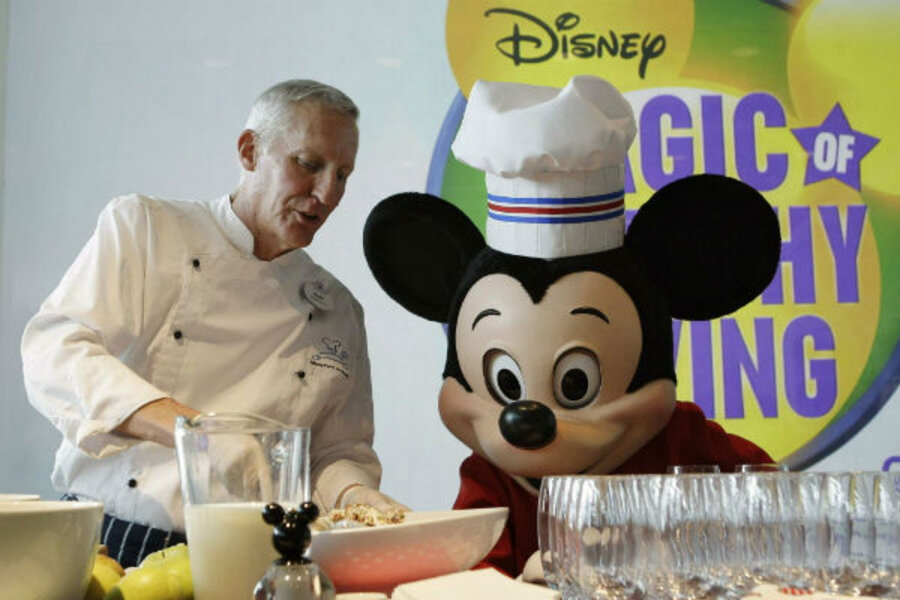Disney bans junk food, Mickey Mouse brands health. Hmmm...
Loading...
So, I’ve been thinking about one of our news items from earlier this week, and just can’t shake the feeling that the glass slipper doesn’t quite fit.
On Tuesday, First Lady Michelle Obama and Walt Disney Co. Chairman and CEO Robert Iger announced that as of 2015 Disney will ban junk-food advertising on its children’s television and radio programs.
Once the new regulations are in effect, food and beverage products will have to meet nutritional guidelines for serving size, calories, and fat and sugar content. Which means no more cartoon characters peddling sugary cereal or mass-processed cookies in the middle of Saturday morning kids programming.
This is, clearly, an important step. Not just because Disney is getting rid of junk-food marketing, but because of the implicit acknowledgement within its move that that the way companies advertise to children does impact their health.
(Mrs. Obama made reference to this herself at the press conference, saying that “for years, people told us that no matter what we did to get our kids to eat well and exercise, we would never solve our childhood obesity crisis until companies changed the way that they sell food to our children.”)
But there’s another big part of Disney’s new program that is getting a lot less attention – and to me feels a wee bit disturbing.
On Tuesday, Disney introduced what it is calling the “Mickey Check,” which it described as a Mickey Mouse icon “tool” that “calls out nutritious food and menu items sold in stores, online and at restaurant food venues at its U.S. Parks and Resorts.” It may be coming to a store near you, soon, too, appearing on what Disney described as “licensed food products.”
That’s right. Disney is working to brand health. And apples.
Smart business move. Disney is already deep in the produce business, reportedly selling billions of Disney-branded servings of fresh fruit and vegetables. But now it’s moving in on healthy eating overall, equating its brand with “good for you.”
And sure, some parents might find this helpful. “Look, toddler, of course you want the apple slices. Mickey says so!”
But it just seems to me to be ... I don’t know. Problematic? Aren’t little kids bombarded with enough advertising messages? Does healthy eating – such a huge public health issue given childhood obesity rates, and one that goes to the intimate heart of families – need to be connected to the whole host of Disney (or any other company’s) consumer products?
I called up Josh Golin, associate director of the Campaign for a Commercial-Free Childhood, to get his thoughts. (And to see whether I was just stuck in the tower on this one.)
“We think teaching kids to eat based on characters is counter productive,” he said, although he wanted me to make clear that he believed Disney’s overall announcement was positive, in large part because it shows that junk-food marketing has become stigmatized.
Golin said that it's important for children to learn about healthy eating by understanding what’s good for them; not by mindlessly following a brand.
Besides, he said, using beloved cartoon characters to target children is manipulative. Developmentally, he said, children have real love for the characters they know from stories.
“I think it’s wrong to take a child’s love for the character and leverage that love to get them to buy something. Even if it’s a product we think is ‘good.’ If children don’t understand the process of what’s happening to them – if they don’t understand the way their own love is being commodified and leveraged – that’s wrong. It’s manipulative.”
Besides, he said, if eating choices are taught to be brand-based, what’s to keep kids from going after another brand that’s used for less healthy foods?
The Mickey Check is not surprising, of course. As Iger acknowledged earlier this week, Disney’s move might be socially beneficial, but it’s also good business. And for those of us with kids, it means yet another area where we are going to have to worry about marketing.








